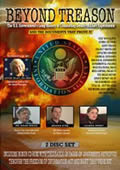Other
Kouri
Articles:
Battle at The Border: The War Few Discuss in Washington
Illegal Alien Killers, Rapists and Robbers
THE FORGOTTEN ILLEGAL IMMIGRANTS
Jim
Kouri, CPP
January 14, 2006
NewsWithViews.com
While most of the political debate and media attention regarding illegal immigration focuses on border security and llegals who enter the country surreptitiously, there is an enormous number of immigrants who enter the US legally, but remain here illegally.
Some law enforcement commanders and prosecutors are aware of the problem of so-call visa overstays. For instance, The Maricopa County (Arizona) Attorney's Office hosted a conference on the issue of illegal immigration in November 2005. While the conference agenda addressed border security issues, the subject of visa overstays was addressed. Speakers included Congressman Tom Tancredo and renowned columnist John Leo, according to county attorney and columnist Rachel Alexander.
Each year, millions of visitors, foreign students, and immigrants come to the United States. Foreign visitors may enter on a legal temporary basis -- that is, with an authorized period of admission that expires on a specific date -- either with temporary visas (generally for tourism, business, or work) or, in some cases, as tourists or business visitors who are allowed to enter without visas.
The majority of visitors who are tracked depart on time, but others overstay -- and since September 11, 2001, the question has arisen as to whether overstay issues might have an impact on domestic security.
Significant numbers of foreign visitors overstay their authorized periods of admission. Based in part on its long-standing I-94 system for tracking arrivals and departures, the Department of Homeland Security estimated the overstay population at 2.3 million. But this estimate excludes an unknown number of long-term overstays from Mexico and Canada, and by definition and it excludes short-term overstays from these and other countries. Because of unresolved weaknesses in DHS's long-standing tracking system, there is no accurate list of overstays.
Tracking system weaknesses make it difficult to monitor potentially suspicious aliens who enter the country legally--and limit immigration control options. Post-September 11 operations identified thousands of overstays and other illegal immigrant workers who (despite limited background checks) had obtained critical infrastructure jobs and security badges with access to, for example, airport tarmacs and US military bases.
As of April 2004, federal investigators had arrested more than 1,360 illegal workers, while the majority had eluded apprehension. Together with other improvements, better information on overstays might contribute to a layered national defense that is better able to counter threats from foreign terrorists.
A more comprehensive system, US-VISIT, the U.S. Visitor and Immigrant Status Indicator Technology, is being phased in. The design and implementation of US-VISIT, however, face a number of challenges. It is important that this new program avoid specific weaknesses associated with the long-standing system. Checking for these weaknesses might help identify difficult challenges in advance and--together with other efforts--enhance US-VISIT's chances for eventual success as a tracking system.
The National Strategy for Homeland Security calls for preventing foreign terrorists from entering our country and using all legal means to identify, halt, and where appropriate, prosecute or bring immigration or other civil charges against terrorists in the United States.
Congress reported in June 2003 that the visa revocation process needed to be strengthened as an antiterrorism tool and recommended that the Department of Homeland Security, in conjunction with the Departments of State and Justice, develop specific policies and procedures to ensure that appropriate agencies are notified of revocations based on terrorism grounds and take proper actions.
An analysis shows that the Departments of State and Homeland Security took some actions in the summer of 2003 to address weaknesses in the visa revocation process identified in its June 2003 report. However, a review of visas revoked from October to December 2003, including a detailed review of a random sample of 35 cases, showed that weaknesses remained in the implementation of the revocation process, especially in the timely transmission of information among federal agencies.
For example, delays existed in matching names of suspected terrorists with names of visa holders and in forwarding necessary information to the State Department. In at least 3 of the 35 cases, it took them 6 months or more to revoke visas after receiving a recommendation to do so. In 3 cases, it took a week or longer after deciding to revoke visas to post a lookout or notify the Department of Homeland Security.
Without these notifications, DHS may not know to investigate those individuals who may be in the country. In 10 cases, DHS either failed to notify or took several months to notify immigration investigators that individuals with revoked visas may be in the country. It then took over 2 months for immigration investigators to request field investigations of these individuals.
After government investigators initiated its first inquiry, additional actions were taken to improve the process, including revising procedures and reassessing the process. The DHS and State Department believe these actions will help avoid the delays experienced in the past. In April and May, State revised its procedures and formalized its tracking system for visa revocation cases. In March, DHS developed new written procedures and acted to ensure that immigration investigators are aware of all individuals with revoked visas who may be in the country.
|
Subscribe to the NewsWithViews Daily News Alerts! |
The State Department and DHS also took some steps to address legal and policy issues related to visa revocations. In April, the Terrorist Screening Center, an interagency group organized under the Federal Bureau of Investigation, identified the visa revocation process as a potential homeland security vulnerability and developed an informal process for TSC to handle visa revocation cases. However, weaknesses remain. For example, State's and DHS's procedures are not fully coordinated and lack performance standards, such as specific time frames, for completing each step of the process. Outstanding legal and policy issues continue to exist regarding the removal of individuals based solely on their visa revocation.
Sources:
US
Department of Homeland Security,
US Department of State,
Federal Bureau of Investigation,
Government Accounting Office,
National Association of Chiefs of Police,
National Security Institute,
Maricopa County Attorney's Office
� 2006 Jim Kouri- All
Rights Reserved
Jim Kouri, CPP is currently fifth vice-president of the National Association of Chiefs of Police. He's former chief at a New York City housing project in Washington Heights nicknamed "Crack City" by reporters covering the drug war in the 1980s. He's also served on the National Drug Task Force and trained police and security officers throughout the country.
He writes for many police and crime magazines including Chief of Police, Police Times, The Narc Officer, Campus Law Enforcement Journal, and others. He's appeared as on-air commentator for over 100 TV and radio news and talk shows including Oprah, McLaughlin Report, CNN Headline News, MTV, Fox News, etc. His book Assume The Position is available at Amazon.Com, Booksamillion.com, and can be ordered at local bookstores.
E-Mail: COPmagazine@aol.com
...there is an enormous number of immigrants who enter the US legally, but remain here illegally.











